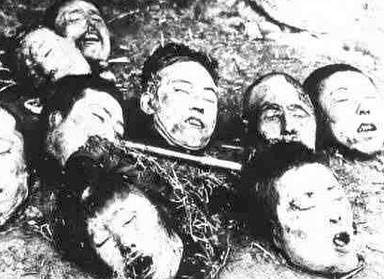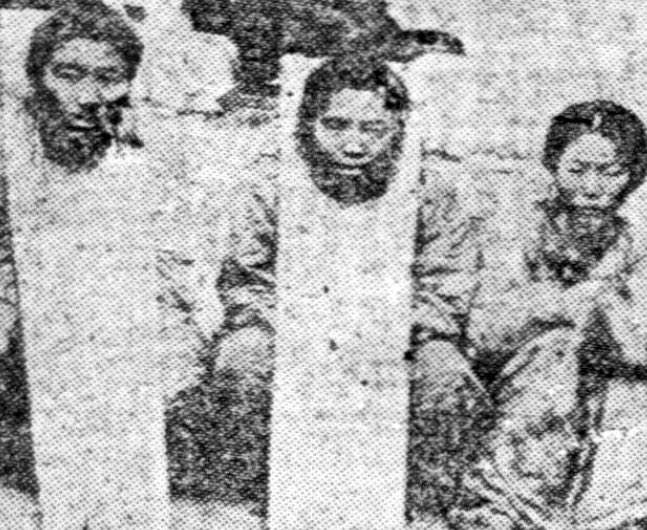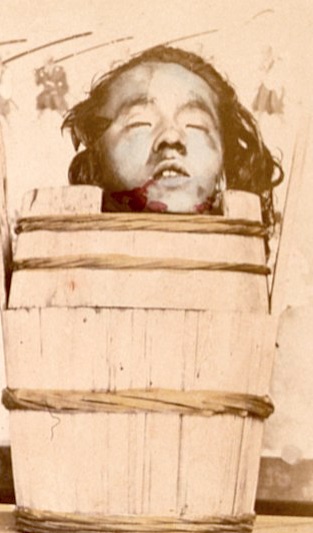
I have written about decapitated heads that bite, but I have not touched on the eyes of decapitated heads moving.
There is a lot of literature from the 1800s and early 1900s that mention eyes moving after decapitation, but I recently found a rather grisly description of this phenomenon in an article published in 1884.

Sabre Cuts
A French surgeon was visiting the southern part of Korea and was able to witness criminal executions while he was there. These executions were beheadings done with long sabres.
“[The sabres is] held in the two hands of the executioner, who in cutting draws the blade toward him, and usually separates the head from the body in a single blow.”
My prayers to those who endured more than a single blow to lose his head.
To accomplish the “perfect” execution, the blade had to pass between two of the vertebrae in the neck. This meant that the condemned had to bend his neck over a block to pull apart the vertebrae for a clean shot.
“When the criminal, through fear, does not hold his head right, an assistant pulls it downward [over the block] by the long hair.”

Eyes That Follow
According to the French surgeon, when he was present at the beheading of a pirate:
“Previous to the blow, the attention of the condemned was fixed upon the [surgeon]. The head fell upright, the cut surface upon the sand, thus arresting the loss of blood. The eyes were still fixed on [the surgeon]. They followed him as he moved to one side, and more slowly as he moved back; then, after an instant, left him suddenly, while the face expressed extreme anguish, the anguish of a man who is suffocating. The mouth opened violently, as if to take a last breath, and the motion caused the head to roll over.”

Rising Body
To add to the horror, the surgeon also mentioned having seen bodies rise up after being decapitated.
“[The surgeon] has seen the body (which cannot fall because it is tied to a stake, the prisoner kneeling) rise up after decapitation, as though to take up a vertical position, and do this several times, each time with less force. Each elevation was accompanied by a jet of arterial blood, and it is probably that these jets, caused by the last heartbeats, are the causes of the movements.”
Sweet dreams.
Source: Alexandria gazette. (Alexandria, D.C.), 02 Aug. 1884.

